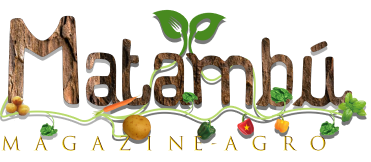Onions are one of the largest fresh and most widely adapted vegetables grown in Uganda. They can be grown in subtropical areas from the tropics, due to the different responses of day length. Unlike most other species, day length affects bulbing in onions, unlike other plants.
John Kizito, a farmer says that onion bulbing is primarily driven by photoperiod or day length. Both long-day and medium-day onion varieties are recommended. Onions are also divided by skin colour and these include: red, white, brown, or yellow, and bulb shape which is round, flat, or globe.
Soil management
Kizito says onions grow best in fertile and well-drained soils. However, most sandy loam or sandy soil will benefit sweet onion production.
“Avoid soils with heavy clay content. Loamy soils are high in sulphur, which can cause onions to rot. Extremely sandy soils are more difficult to manage because they require more fertiliser and water,” says Kizito.
He adds that fertiliser requirements should always be based on properly obtained soil samples.
“You have to obtain a soil sample a few months before crop establishment to determine lime requirements and make timely lime applications. If soil test results show less liming it is necessary to keep the soil pH above 6.0 points. Low pH levels can cause nutrient deficiencies during the growing season. Also, high rates of fertiliser used in onion production cause the pH level to drop during the growing season,” he says.
The Farmer adds that if the pH level is not corrected during the planting period, nutrient deficiencies can occur throughout the year, and yield may decrease. Even soil tests indicate adequate levels calcium and phosphorus deficiencies are often associated with low pH. But phosphorus deficiency can be difficult to correct during the growing season due to low pH.
Fertiliser requirement
Kizito says that onions require more fertiliser than most vegetable crops. The onions respond well when they receive additional fertiliser after of transplanting.
“Manure application is crucial to achieve maximum yield, with multiple applications ensuring good yields,” he says.
However, Kizito indicates that good results can be obtained by using as few as three fertilisers. Pre-plant fertilisation will vary with natural fertility and harvest date. For commercial onion cultivation, irrigation is necessary at the time of transplanting/doubling cloves, and then light irrigation is required on the third day of planting.
“It is advisable to water the transplants immediately after planting. Apply well-rotted farmyard manure. Farmyard manure for the onion crop is applied during field preparation. Apply 50 percent nitrogen and full amounts of phosphorus and potash before transplanting or planting bulbs,” says Kizito.
Irrigation
He adds that immediately after transplanting, irrigation is given according to the need and critical stages of the crop. Irrigation should be stopped 15 to 20 days before the bulbs are uprooted, or maturation begins. Onions need very careful and frequent irrigation as it is a shallow-rooted crops.
“The need for water decreases during the early development of the crop and increases later in the growing stages. Irrigation should be done at intervals of 10 to 15 days in cold weather and one week in hot weather,” he says
Pest management
Kizito adds that weed management in onions can be achieved with a good herbicides, cultivation, and crop rotation system.
“If the infection level is mild, early planting can reduce weed problems. Pests can be the main problem in onion farming. Thrips and onion maggots have the potential to reduce crops in any year,” he says.
Kizito adds that the leaf miner problem is a new invasive worm in onions and in that case monitoring pest populations will help you find the best time to use pesticides and how often to spray.
“Numerous diseases can cause crop damage, especially bottom mildew, purple spots, and white rot. These plant diseases can be prevented using good crop circulation systems, high-quality soil with good ventilation, and disease-resistant onion varieties,” he says.
Harvesting
Kizito says during harvesting time you need to pull off any bulbs that send up flower stalks because this means the bulbs have stopped growing. These onions will not store well but can be used in recipes in a few days.
“Check for spring-planted onions which are ready to harvest. As the onions ripen, the top leaves turn yellow and fall off. At this point, bend the tops downward or lean over the plants to speed up the final ripening process,” he advises.
“Pull the onions carefully when the tops are brown. Handle them carefully, as the slightest injury even in storage will encourage rotting. Trim the roots, cutting the tops to one to two inches but leave the tops if you plan to string the onions together,” Kizito recommends.
Source : African Agri magazine









